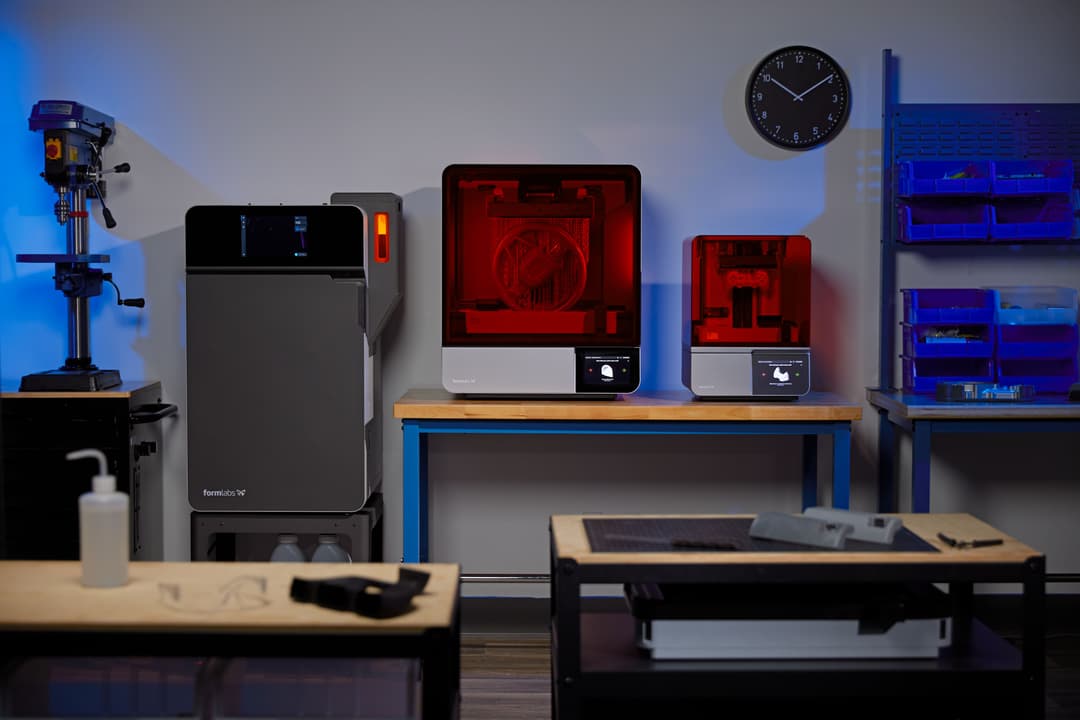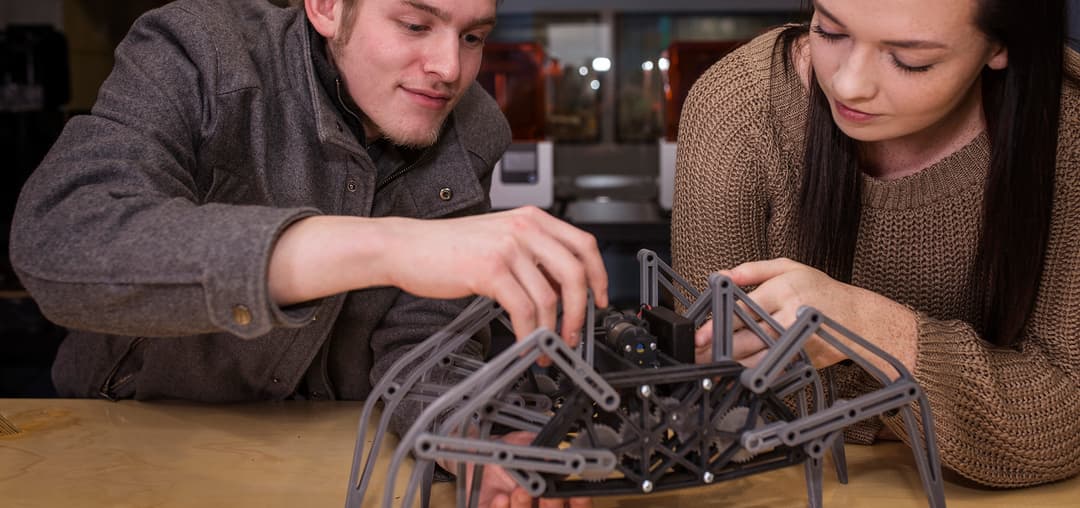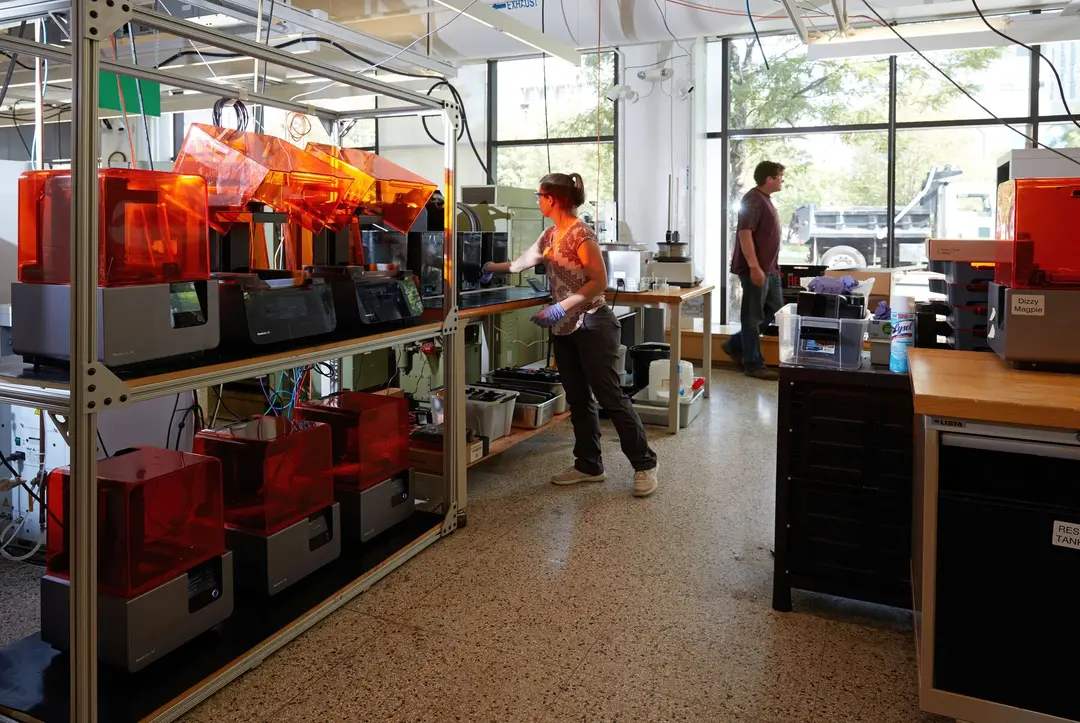
Pharmaceutical research can be tedious, and last for years. In order to get a new active pharmaceutical ingredient on the market, researchers must measure and quantify the lifetime of that ingredient in the human body in the early stages of the development of the medication.
Using 3D printed models of human organs helps speed up this process, from mimicking human body conditions for drug delivery to showcasing new methods of releasing medication into the human body to investors.
Dr. Stephen Hilton is a senior lecturer and the University College London (UCL) and a member of the department of pharmaceutical and biological chemistry, as well as the UCL School of Pharmacy.
Look inside the lab at UCL to learn how Dr. Hilton and team use 3D modeling and 3D printing to speed up pharmaceutical research and teach students how human organs respond to drug delivery.
Peek Inside the Body With 3D Printed Organ Models
Dr. Hilton’s lab uses models of internal organs for pharmaceutical research. “For example, we 3D print models of the stomach and use them to explain how a specific solution works in the stomach as it passes through,” Hilton said. “With this information, you can control the medication.”
The highly precise stereolithography (SLA) 3D printed clear models show how a medication enters the stomach and grows in size, slowly releasing a medication over the course of a week or two. This slow release reduces the number of times a patient needs to take a medication, as one dose can last a week instead of the patient needing to take a pill every day or multiple times a day.

Dr. Hilton uses these 3D printed models not just to advance research, but to show proof-of-concept for funding applications, as well as various competitions involving pharmacology and drug delivery.
Dr. Hilton’s lab currently has five Formlabs 3D printers that they use daily. The accuracy and precision of the SLA 3D printers provide opportunities to create parts that would be impossible with other methods.
“I think there's a clear balance between the Form 2 SLA 3D printers and the FDM printers. FDM is good for large, lightweight, and hollow objects that are easy to pick up and move around,” Dr. Hilton said. “SLA printing is actually much better for smaller objects that require high accuracy.”
Helping Students Visualize Chemistry and Body Functions
Chemistry is an essential aspect of pharmacology, as well as pharmaceutical research and development. Dr. Hilton finds it essential that students, both undergraduate and graduate, completely understand the chemistry behind active pharmaceutical ingredients before moving on in their studies.
“We tend to use the 3D printers for the teaching of stereochemistry and molecules. We make small models of molecules so we can explain chirality, stereochemistry, and orbitals,” Dr. Hilton said.

The Hilton Lab also print stomach models, jaws and teeth for root canal research, models of the eye, the brain, and more.
With detailed models, instructors show students how certain parts of the human body function and react to different chemistries. The Form 2 can create optically clear parts with Clear Resin, allowing students to look inside an organ and see a chemical reaction to occur, such as a tablet or powder entering a solution in the stomach and changing the conditions inside the stomach walls.
“We actually incorporate 3D printing into the fourth year course on pharmacy now and we teach students how to use the technology in the MSc course as well,” Dr. Hilton said.
“I use the Form 2 to print molds for medical devices for a ventilation therapy project,” said Zaid Muwaffak Hassan, a PhD student in the Hilton Lab. “It’s very easy to use, very accurate, and has really high details. I did not have a single failure on the Form 2 despite all the things I threw at it, which saved me a lot of time compared to my past experiences with other printers.”
Accelerate Research and Education With 3D Printing
3D printers are quickly becoming an essential tool for educational labs and classrooms around the world. Download our white paper to understand the 3D printing landscape for education and learn how educators can implement the technology in the curriculum.
Follow UCL’s research group and lab on Instagram to keep up with the latest developments. Find related research publications co-authored by Dr. Hilton on our list of research publications using Formlabs printers.


